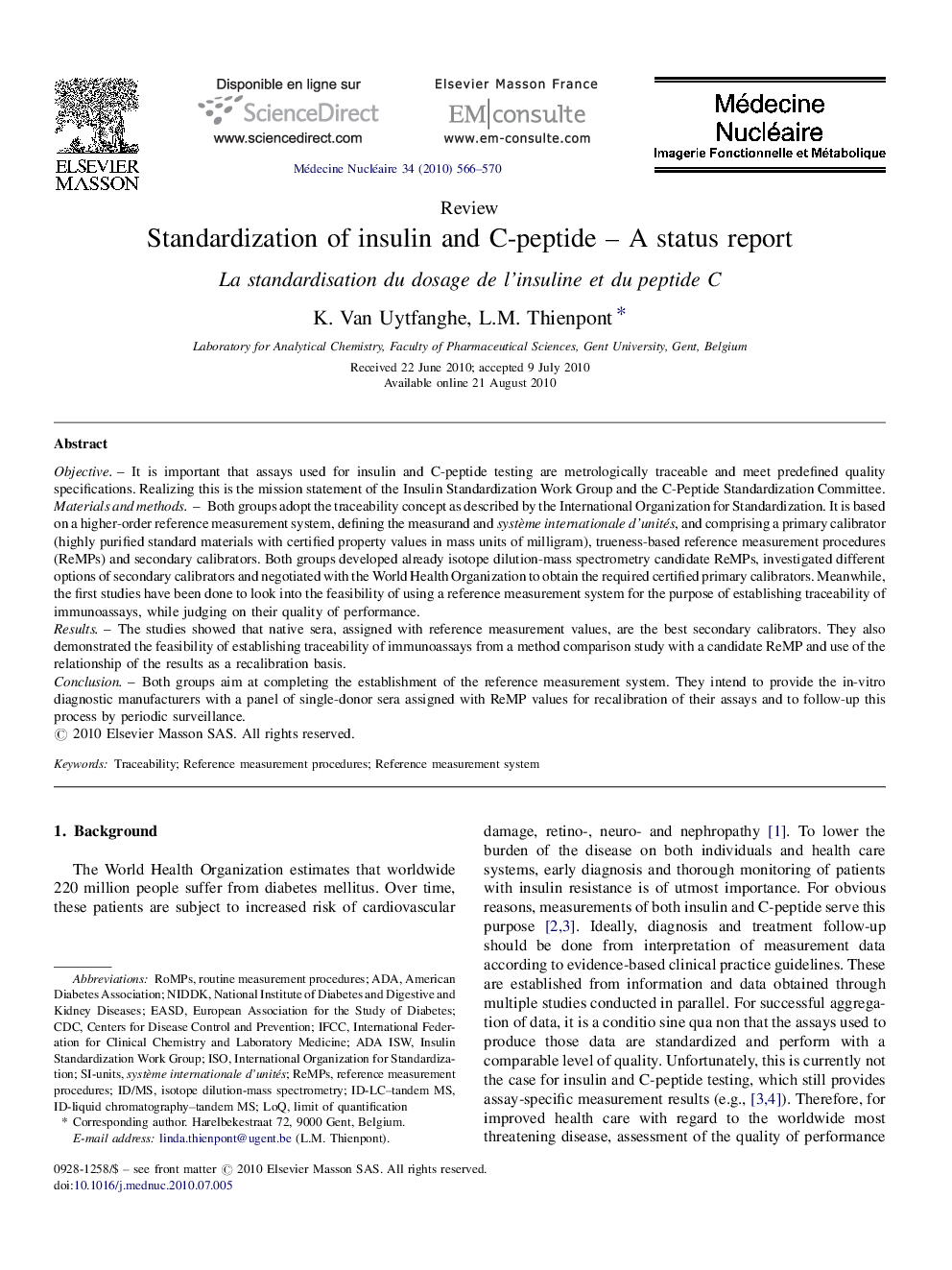| Article ID | Journal | Published Year | Pages | File Type |
|---|---|---|---|---|
| 4244503 | Médecine Nucléaire | 2010 | 5 Pages |
ObjectiveIt is important that assays used for insulin and C-peptide testing are metrologically traceable and meet predefined quality specifications. Realizing this is the mission statement of the Insulin Standardization Work Group and the C-Peptide Standardization Committee.Materials and methodsBoth groups adopt the traceability concept as described by the International Organization for Standardization. It is based on a higher-order reference measurement system, defining the measurand and système internationale d’unités, and comprising a primary calibrator (highly purified standard materials with certified property values in mass units of milligram), trueness-based reference measurement procedures (ReMPs) and secondary calibrators. Both groups developed already isotope dilution-mass spectrometry candidate ReMPs, investigated different options of secondary calibrators and negotiated with the World Health Organization to obtain the required certified primary calibrators. Meanwhile, the first studies have been done to look into the feasibility of using a reference measurement system for the purpose of establishing traceability of immunoassays, while judging on their quality of performance.ResultsThe studies showed that native sera, assigned with reference measurement values, are the best secondary calibrators. They also demonstrated the feasibility of establishing traceability of immunoassays from a method comparison study with a candidate ReMP and use of the relationship of the results as a recalibration basis.ConclusionBoth groups aim at completing the establishment of the reference measurement system. They intend to provide the in-vitro diagnostic manufacturers with a panel of single-donor sera assigned with ReMP values for recalibration of their assays and to follow-up this process by periodic surveillance.
